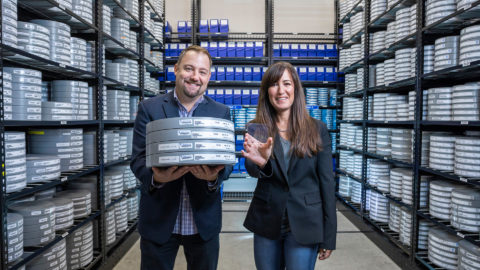IT Solutions: Research chip modeled after the brain aims to bring smarts to computers
Researchers at the University of Tennessee, Knoxville, create a neuromorphic chip with off-the-shelf components
The dream of creating intelligent computers has inspired the development of exotic chips based on the structure of the brain, which operates in mysterious ways. Some researchers are making such chips from components found in today’s computers.
Using components pulled off store shelves, researchers at the University of Tennessee, Knoxville, have made a chip for intelligent computers that can learn. The chips are structured to discover patterns through probabilities and association, helping with decision making.
The researchers are using off-the-shelf, reprogrammable circuits called FPGAs (field programmable gate arrays) to simulate the way neurons and synapses in a brain operate. The chip was made as part of the university’s DANNA neuromorphic software project.
FPGAs excel at doing specific tasks and can be easily reprogrammed for other applications.
Researchers are developing neuromorphic chips for what’s being called the post-Moore’s Law era. It’s becoming difficult to further shrink the chips that power PCs and mobile devices, so researchers are trying to apply the brain’s structure to computing.
Brains have 100 billion neurons that process and transmit information, and can compute in parallel via trillions of connections, the synapses. The researchers are creating a mesh network of neurons and synapses in FPGAs to deal with input, output and connections. Researchers are also establishing software models that can be applied to this neural network.
Researchers are also looking at ways to swap out FPGAs with the emerging memristor technology. Memristor is a form of memory and storage that can retain data and is considered a replacement for DRAM.
The ability for FPGAs and memristors to store data differentiates the research from other efforts to develop neuromorphic systems. The most notable is IBM’s TrueNorth, which is modeled to be more of a central processing unit. FPGAs can mimic CPUs, but meet the researchers’ goals to focus on the programmability of circuits.
The flexibility of the chip and architecture widens the scope of applications in which neuromorphic systems could be used, the researchers wrote in a paper presented at the International Workshop on Post Moore’s Era Supercomputing, held alongside the Supercomputing 16 conference in Salt Lake City, Utah, this week.
“We believe our architectures are particularly amenable for supercomputing applications because of their programmability“, the researchers said in the paper.
But there are disadvantages to using FPGAs for a practical brain model. Reprogramming FPGAs requires bringing them offline, which can disrupt the execution of tasks. Moreover, FPGAs can’t be primary chips that boot systems. They are mostly being used as co-processors and can be power hungry.
For the researchers, the chip architecture is more important than the type of chip. More chip prototypes based on the architecture will be made available to other researchers.
There is a lot of cooperation between researchers focusing on brain-mimicking chips. Outside of IBM, neuromorphic computing research is ongoing at the University of Manchester, the University of Heidelberg in Germany, Stanford University, and Zhejiang University in China.
For more information and a personalized IT Solutions business offer, please contact us.
Source: www.computerworld.com



